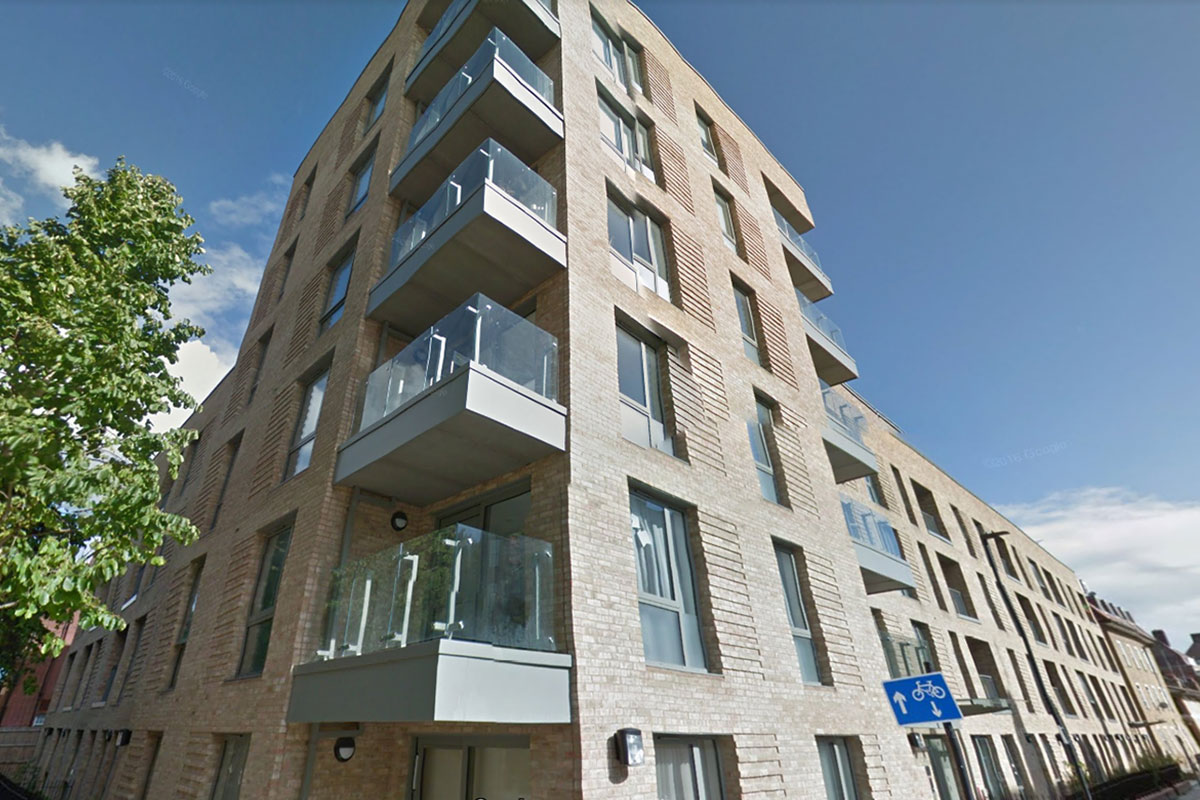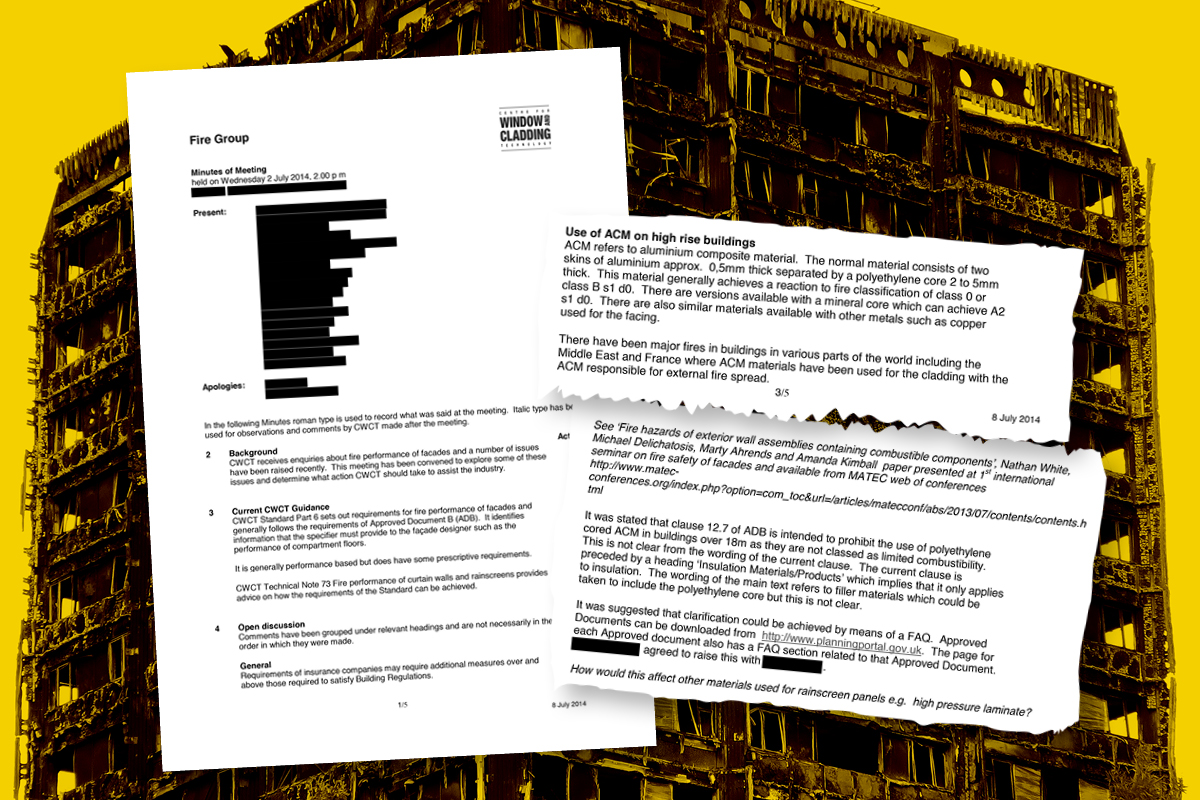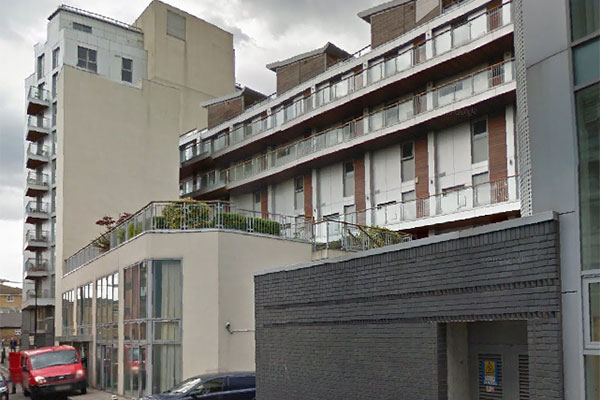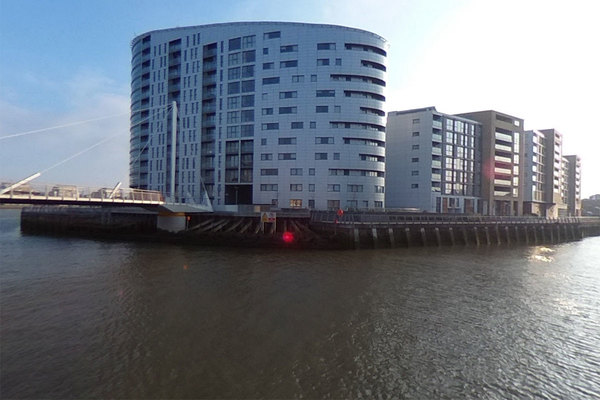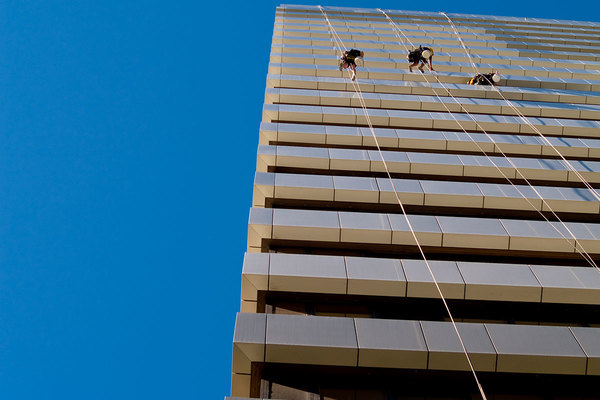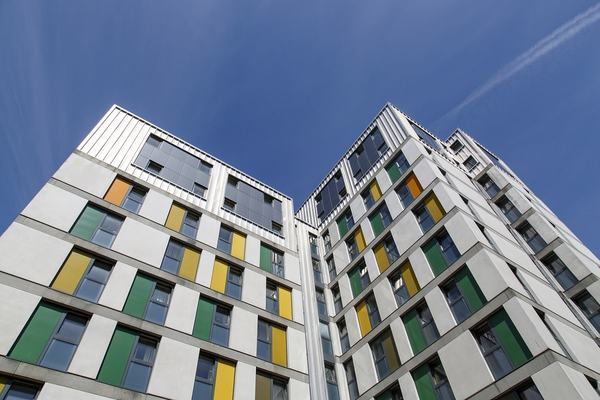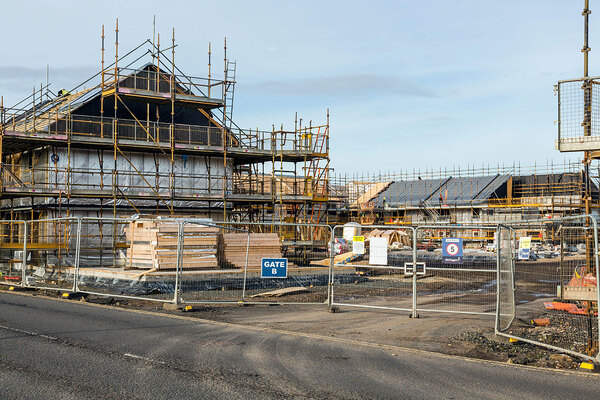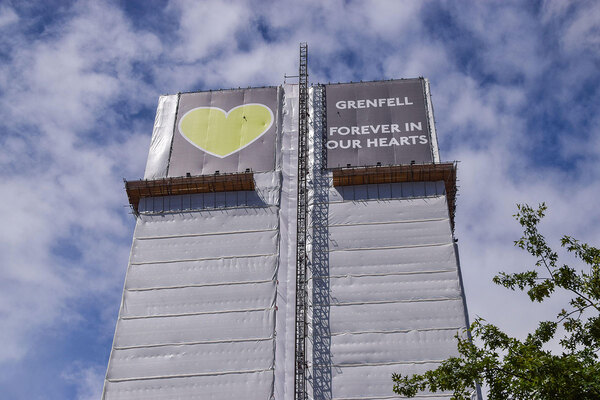Peabody will not pass on cladding removal costs to leaseholders
Housing association Peabody has promised not to pass on the costs of replacing cladding to its leaseholders in four privately-owned blocks.
The 55,000-home landlord has written to residents of 101 affected shared ownership flats in four developments across London informing them that it will not be seeking to recoup remediation costs through service charges.
These are Palm House and Malt House in Lambeth, Babbage Point in Greenwich, Montgomery House and Court in Paddington, and New Festival Quarter in Poplar.
A number of housing associations around the country are thought to be facing issues involving dangerous cladding on blocks of flats leased from private owners, typically under Section 106 agreements.
The government has promised to pay for the cost of removing and replacing unsafe cladding on social housing tower blocks – but only those where the building is owned by councils or housing associations.
Aluminium and polyethylene cladding was fitted onto the outside of Grenfell Tower in a refurbishment which was completed in 2016, before last summer’s tragedy that killed 72 people.
Cladding has been in the spotlight ever since.
A letter to Palm and Malt House residents from DJC Property Management, which manages the block on behalf of the building owners, earlier this summer said the company would seek to clarify whether the category two aluminium composite material (ACM) cladding on Palm House needed to be replaced.
It added that “this is likely to take some time while government guidance is developed and the Grenfell enquiry [sic] proceeds”.
Fears had grown that shared ownership residents of Palm and Malt House may have to contribute to the costs of any cladding work, but Peabody has now dismissed this.
“Although Peabody is your landlord we do not own your building, we lease it, so we are not responsible for replacing the ACM cladding if that is required,” said the letter.
“Under normal circumstances the building’s owner would bill Peabody for the cost of these works and we would pass those costs on to you in your service charges.
“However, given the unprecedented circumstances surrounding the use of ACM cladding we believe costs for its replacement should not be borne by leaseholders and shared owners.”
A spokesperson for Peabody said: “While repairs costs are normally the buyers’ responsibility, these are exceptional circumstances.
“We hope our decision not to pass on fire safety costs will reassure residents who bought in good faith.”
Developer Bellway covered the £150,000 cost of a waking watch that was put in place on both Palm House and its sister tower Malt House after the Grenfell Tower blaze and terminated earlier this year after consultants and fire chiefs agreed it was not necessary.
A spokesperson for the Ministry of Housing, Communities and Local Government said: “We welcome Peabody’s decision not to pass on the costs of removing and replacing cladding to leaseholders in these privately-owned blocks.
“We have also heard that Barratt Developments, Legal & General, Taylor Wimpey and Mace will protect leaseholders from additional costs, and want to see more building owners and developers doing the right thing and taking responsibility.”
Update: at 11.04am 08/08/18 a comment from MHCLG was added to the story.
Timeline: a short history of cladding and building regulations
- January 2000 - Following the tower block fire at Garnock Court - which killed a pensioner with disabilities - a report by the Environment, Transport and Regional Affairs Committee concluded that building regulations required "external surfaces (and hence cladding)... should be of a material classified as 'Class O' for spread of fire". It adds: "We do not believe that it should take a serious fire in which many people are killed before all reasonable steps are taken towards minimising the risks [from cladding fires]."
- January 2008 - The British Board of Agrément provides a certificate confirming a Class 0 rating for Reynobond PE, the material later installed on Grenfell Tower
- March 2013 - The coroner investigating the Lakanal House blaze in south London, which killed six, writes to Eric Pickles, communities secretary, advising him to review official guidance contained in Approved Document B "with particular regard to the spread of fire over the external envelope of a building". Mr Pickles replies, indicating that changes will not made until "2016/17"
- July 2014 - At a meeting of the Centre for Window and Cladding Technology, the government is warned that its guidance is not clear enough to prohibit the use of aluminium composite cladding with a polyethylene core (ACM(PE)) on tall buildings, which has been linked to a number of fires worldwide. The Building Research Establishment agrees to draft an 'FAQ' making it clear that this material is prohibited, but never does.
- 14 June 2017 - A kitchen fire at Grenfell Tower, west London, spreads to the recently installed ACM(PE) cladding. The resulting fire totally engulfs the building, trapping residents and killing 72 people.
- 22 June 2017 - The government writes to social landlords claiming ACM(PE) is banned by guidance, despite its failure to clarify this point before the fire. Philip Hammond, chancellor, repeats this claim on the BBC's Andrew Marr Show.
- 17 May 2018 - The government announces plans to ban combustible materials on high rises buildings, and later publishes draft 'clarified' guidance, removing the passage which had been interpretted as permitting 'Class 0' cladding.
The Paper Trail: The Failure of Building Regulations
Read our in-depth investigation into how building regulations have changed over time and how this may have contributed to the Grenfell Tower fire:
Never Again campaign
In the days following the Grenfell Tower fire on 14 June 2017, Inside Housing launched the Never Again campaign to call for immediate action to implement the learning from the Lakanal House fire, and a commitment to act – without delay – on learning from the Grenfell Tower tragedy as it becomes available.
One year on, we have extended the campaign asks in the light of information that has emerged since.
Here are our updated asks:
GOVERNMENT
- Act on the recommendations from Dame Judith Hackitt’s review of building regulations to tower blocks of 18m and higher. Commit to producing a timetable for implementation by autumn 2018, setting out how recommendations that don’t require legislative change can be taken forward without delay
- Follow through on commitments to fully ban combustible materials on high-rise buildings
- Unequivocally ban desktop studies
- Review recommendations and advice given to ministers after the Lakanal House fire and implement necessary changes
- Publish details of all tower blocks with dangerous cladding, insulation and/or external panels and commit to a timeline for remedial works. Provide necessary guidance to landlords to ensure that removal work can begin on all affected private and social residential blocks by the end of 2018. Complete quarterly follow-up checks to ensure that remedial work is completed to the required standard. Checks should not cease until all work is completed.
- Stand by the prime minister’s commitment to fully fund the removal of dangerous cladding
- Fund the retrofitting of sprinkler systems in all tower blocks across the UK (except where there are specific structural reasons not to do so)
- Explore options for requiring remedial works on affected private sector residential tower blocks
LOCAL GOVERNMENT
- Take immediate action to identify privately owned residential tower blocks so that cladding and external panels can be checked
LANDLORDS
- Publish details of the combinations of insulations and cladding materials for all high rise blocks
- Commit to ensuring that removal work begins on all blocks with dangerous materials by the end of 2018 upon receipt of guidance from government
- Publish current fire risk assessments for all high rise blocks (the Information Commissioner has required councils to publish and recommended that housing associations should do the same). Work with peers to share learning from assessments and improve and clarify the risk assessment model.
- Commit to renewing assessments annually and after major repair or cladding work is carried out. Ensure assessments consider the external features of blocks. Always use an appropriate, qualified expert to conduct assessments.
- Review and update evacuation policies and ‘stay put’ advice in the light of risk assessments, and communicate clearly to residents
- Adopt Dame Judith Hackitt’s recommended approach for listening to and addressing tenants’ concerns, with immediate effect
CURRENT SIGNATORIES:
- Chartered Institute of Housing
- G15
- National Federation of ALMOs
- National Housing Federation
- Placeshapers
